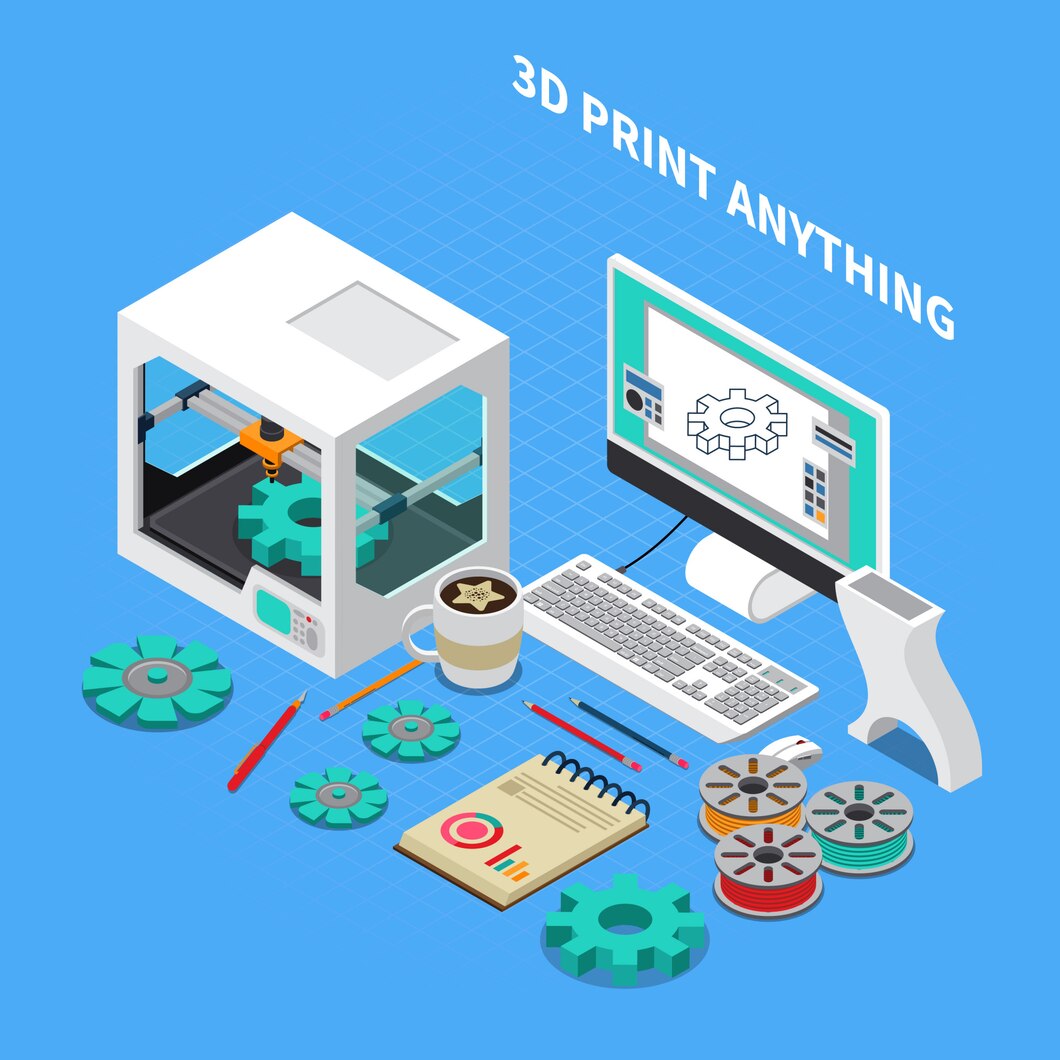3D printing, also known as additive manufacturing, is transforming industries by enabling rapid prototyping, customization, and more sustainable manufacturing. Initially used for prototyping, 3D printing has evolved to offer solutions in industries as diverse as healthcare, automotive, and even food production. The impact of 3D printing is especially notable in how it fosters innovation, accelerates development cycles, and opens up possibilities for personalization and complex designs that were previously unimaginable.
This article delves into the impact of 3D printing across several sectors, showcasing how it is revolutionizing traditional methods and unlocking new potentials.
Healthcare: Revolutionizing Patient Care and Medical Research
3D printing has significantly impacted the healthcare industry, especially in patient-specific solutions and medical research. Customized prosthetics and implants, once expensive and time-consuming, are now produced quickly and accurately with 3D printing technology. This level of customization is crucial for procedures like reconstructive surgeries where patient-specific anatomy needs to be considered. As a result, patient outcomes have improved, as 3D-printed solutions often provide better comfort and functionality than mass-produced alternatives.
Medical researchers also benefit from 3D printing by creating lifelike models for training and testing. With 3D-printed organs, researchers can study diseases, plan complex surgeries, and conduct experimental treatments without risking patient safety. The impact of 3D printing in this field is monumental, offering unprecedented advancements in research, education, and patient care. In the near future, we may even see fully functional 3D-printed organs ready for transplantation, a breakthrough that could address organ shortages globally.
Manufacturing and Industry: Enhancing Production Efficiency and Flexibility
In traditional manufacturing, the creation of complex parts and products often requires molds, specialized tooling, and considerable time. 3D printing, however, allows manufacturers to produce components with complex geometries in one step, eliminating the need for assembly in some cases. This shift significantly reduces lead times and production costs. Moreover, 3D printing allows companies to create small batches or prototypes without investing in costly equipment, thus promoting rapid prototyping and fostering innovation.
The impact of 3D printing is also evident in how it enables on-demand production, reducing the need for large inventory storage and minimizing waste. Companies can print parts only when needed, which is not only economical but also eco-friendly. Furthermore, 3D printing opens up new avenues for mass customization, as each item can be slightly altered to meet specific customer requirements without changing the production process. This flexibility is particularly valuable in industries like automotive and aerospace, where unique designs and material properties are essential.
Aerospace and Defense: Pushing the Boundaries of Design and Material Science
In aerospace and defense, 3D printing has allowed for the creation of lightweight, durable, and complex components that were difficult to achieve with conventional manufacturing techniques. Weight is a crucial factor in these industries, as lighter components contribute to fuel efficiency and reduce operational costs. With 3D printing, engineers can design parts with intricate internal structures that reduce weight while maintaining strength, an achievement that is transforming the aerospace sector.
Furthermore, 3D printing has also enabled the use of high-performance materials, such as metal alloys and carbon fiber composites, which enhance durability and withstand extreme conditions. In the defense industry, 3D printing facilitates the production of custom parts and tools, which can be crucial in remote or challenging environments. The impact of 3D printing in aerospace and defense extends to faster innovation cycles, as prototypes and modifications can be tested and implemented more quickly than with traditional methods.
Automotive Industry: Advancing Customization and Speeding Up Prototyping
The automotive industry has embraced 3D printing for both prototyping and production. With the ability to quickly create prototypes and test designs, manufacturers can bring new vehicles to market faster. This agile development cycle is essential in a competitive industry that continually pushes for improvements in design, safety, and performance. Additionally, 3D printing enables the creation of complex parts, such as engine components, that are more efficient and durable than traditionally manufactured ones.
Moreover, the impact of 3D printing extends to vehicle customization, allowing manufacturers to offer tailored solutions to individual customers. From custom interiors to modified body parts, 3D printing supports a level of personalization that was previously unattainable. This capability is particularly appealing to luxury carmakers who cater to clients looking for unique, exclusive vehicles. By enabling rapid prototyping, customization, and cost-effective production, 3D printing is driving innovation in the automotive industry.
Education and Research: Inspiring Innovation and Enabling Hands-On Learning
The accessibility and versatility of 3D printing have made it a valuable tool in education and research. Universities and research institutions are using 3D printers to encourage hands-on learning, allowing students to design, test, and iterate on projects in real-time. This experiential learning process fosters creativity and problem-solving skills, preparing students for careers in engineering, design, and other STEM fields. In K-12 education, 3D printing is sparking interest in technology and engineering, allowing younger students to explore concepts of design and manufacturing.
In research, the impact of 3D printing is seen in fields as diverse as archaeology, paleontology, and chemistry, where precise replicas and models can be created for study and experimentation. For instance, paleontologists can recreate dinosaur fossils to study their anatomy without risking damage to the original specimens. In the field of chemistry, researchers can create molecular structures to study properties and reactions. As 3D printing technology continues to advance, its role in education and research will only grow, encouraging innovation and expanding the boundaries of knowledge.
Conclusion
The impact of 3D printing spans across various industries, driving innovation by enabling rapid prototyping, customization, and the production of complex, high-performance parts. From healthcare to education, 3D printing is transforming traditional processes and fostering a culture of creativity and experimentation. As the technology evolves, we can expect 3D printing to address even more challenges, offering solutions that are faster, more efficient, and environmentally friendly.
As industries continue to explore the potential of 3D printing, its role in shaping the future of manufacturing, healthcare, aerospace, and beyond will undoubtedly expand. 3D printing is no longer just a tool; it is a catalyst for innovation, enabling businesses, researchers, and educators to push boundaries and create solutions previously thought impossible.




